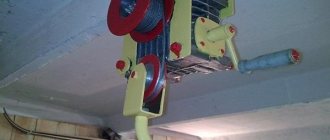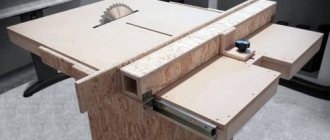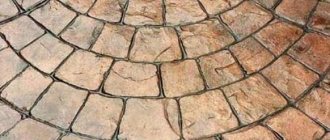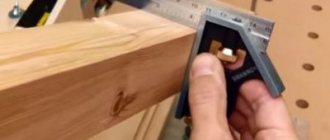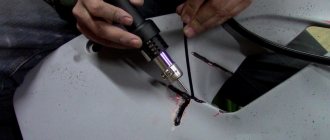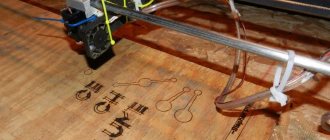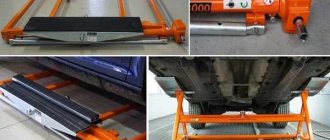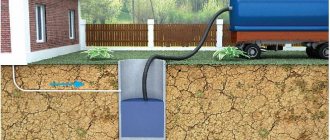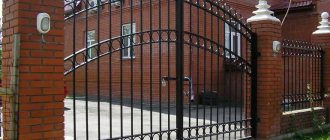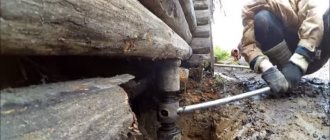An alternative to cement has appeared on the construction market, which from the point of view of environmental friendliness of production is not safe for the atmosphere. Every year, about 2 billion tons of cement are produced worldwide, with each ton releasing 0.4 tons of carbon dioxide into the atmosphere. Engineers worked hard on this problem for a long time until they invented liquid granite - a new word in the technology of producing finishing materials. It has many advantages compared to other finishing materials: fire resistance, versatility, quality, safety, strength.
Definition of liquid granite
Liquid granite is an artificial liquid stone.
Its advantages are due to the fact that, unlike the composition of granite, liquid granite contains purified marble chips (80%) and polyester resin (20%). It hardens when an accelerator and hardener are added to it. During the process of chemical reactions, all harmful substances are released, and the finished product will be environmentally friendly.
Liquid granite can be used in any premises: apartments, offices, schools, summer kitchens in the country and so on. The surfaces for spraying are: wood, stone, metal, porcelain, fiberglass, ceramics, chipboard and fiberboard. Products made from liquid granite resemble products made from natural stone, because it contains marble chips, and you no longer need to use large pieces of stone. The color range of the material is varied thanks to hundreds of color dyes that allow liquid granite to fit into any room.
Find out how to build a summer kitchen in the country in this material.
Advantages and disadvantages of the material
Liquid granite allows you to achieve a complete imitation of products made from natural stone, and working with it is much easier. The composite has many other advantages:
- Resistance to aggressive factors. The material does not delaminate, does not soften and is not destroyed under the influence of alkalis and acids, household chemicals. This allows it to be actively used in the design of bathrooms and kitchens. It is not afraid of ultraviolet rays or changes in air temperature.
- Pore-free and hygienic. Unlike natural stone, liquid granite is not porous, so it does not absorb grease and dirt, does not create an environment for the growth of bacteria, and is easy to wash and wipe.
- Strength. Granite can even be used to make stairs and flooring. It can easily withstand the most severe mechanical loads and does not crack from impacts.
- Moisture resistance. The material is quite suitable for creating bathtubs, sinks, sinks, because it is absolutely not afraid of moisture.
- Maintainability. If, during long-term use, a chip or crack does appear on the granite, it can be repaired without much difficulty using the same mixture. After drying, the “patch” will be completely invisible.
- Large range and versatility. The areas of application of the composite are diverse; it has a spectacular appearance and extensive decorative capabilities. You can add different pigments to the stone to give its texture interesting effects (from slight roughness to a mirror-like shine).
- Environmental friendliness and fire safety. The material is suitable for any room, including children's rooms. It does not emit toxins, is not flammable, does not support smoke and is suitable for finishing fireplaces and stoves.
- Durability. On average, the service life of liquid granite products exceeds 25 years.
The disadvantages of liquid granite include its high cost, although it will be an order of magnitude lower than the production of products from solid stone. However, products made from plastic, wood, MDF, and porcelain stoneware may be cheaper.
Important! When using the spraying technique, the thickness of the products will be small (up to 4 mm), and this increases the risk of peeling off the coating if used incorrectly.
Peculiarities
- The color of the soil does not affect the color of the liquid stone;
- Pleasant to the touch;
- The material is non-toxic, odorless;
- Moisture resistance is achieved by adding a hardener;
- Does not lose its appearance over time, is durable - the service life of the products is more than 25 years;
- It is easy to remove dirt from the surface;
- When temperature changes, a product made of liquid stone does not lose its shape and properties.
Components for liquid stone:
- Plasticine;
- Fiberglass;
- Chemical resin;
- Filler;
- Hardener;
- Acetone;
- Calcinitis;
- Gelcoat;
- Hot melt adhesive;
- Chipboard, fibreboard.
Where is liquid granite used?
Due to its reliability, wear resistance and hygiene, artificial granite is especially popular in hotels and restaurants, clinics and laboratories, and in public areas. It looks no less beautiful in the interior of residential premises, country houses, dachas, and summer buildings.
The material can take any shape, even the most complex, and has a seamless surface, so it is suitable for casting spherical objects - arches, columns, balls. It is used to make stylish countertops, window sills, sinks, sanitary ware, pieces of furniture or individual parts, decorative elements and even facade tiles.
Liquid stone countertops
Liquid granite can be poured or sprayed onto the following base materials:
- ceramics;
- tree;
- metal;
- glass;
- stone;
- porcelain;
- Chipboard and fibreboard.
Manufacturing methods
- Casting method - the finished mixture is poured into a special mold until completely dry. Then the finished product is removed and processed.
- Spraying method - liquid stone is applied to the surface with a sprayer in a layer of several millimeters.
Direct spray method
Direct spraying method - a special primer is applied to the workpiece and allowed to dry. A layer of liquid stone is applied with a sprayer. Sanding and polishing are carried out after drying.
Back pollination method
The reverse pollination method is used if the workpiece is not part of the furniture. The workpiece is placed on the molding surface (chipboard, sheet of glass, table) and traced along its contour. A side made of chipboard or plastic is installed along the contour. A layer of anti-adhesive is applied. After it, liquid stone is sprayed over the surface. When it has partially hardened, soil is sprayed on so that the stone layer does not show through. This creates a mold into which polyester resin is poured. The product is removed from the mold when it has completely hardened.
See photos of Provence style wallpaper for the kitchen here.
Making liquid marble
If you want to make liquid stone with your own hands, you can try making marble. It is very popular, especially for its lithium variety. It is a composite material based on polyester resin. An additional ingredient is a mineral filler. However, it can be quartz sand or marble chips.
Depending on what fillers are chosen, marble can be obtained in imitation of the following types of stones:
- onyx;
- malachite;
- granite;
- jasper;
- natural marble.
When making liquid stone with your own hands, you should know some features about it. Among others, it should be highlighted that the material can be used for finishing, and it is a lightweight, environmentally friendly and flexible material with acrylic polymers and marble chips. Such products can even be cut with scissors or a knife, and also glued to walls instead of wallpaper.
Manufacturing technology
The room in which liquid granite is produced must consist of two rooms. The first room is necessary for direct production, and the second is for polishing the resulting product. The temperature in the rooms should be maintained at 20-24 degrees. There must be ventilation.
Surface preparation begins with removing dirt and dust from it. Before coating, the surface is washed with water and dried thoroughly. All damage, scratches, cracks must be repaired.
Manufacturing stages:
- Prepare the mixture by mixing transparent gelcoat (polymer resin) with granules using a drill in a 2:1 ratio. Hardener is added before spraying.
- The resulting mixture is applied to the product. There are two ways to apply it: direct spraying and reverse spraying.
- The surface of the finished product is ground and polished.
Find out the main elements of an unusual kitchen design in this article.
Production of polymer granite
Now you will be presented with the technology of manufacturing artificial stone using the example of a table.
Table size 1100 mm x 630 mm. First of all, two types of materials are used - 16 mm chipboard and 12 mm plywood. The blanks are cut 1 cm smaller, i.e. 1090 mm x 620 mm. This is explained by the fact that in the process of pouring the edges of the RS blank we will increase it to the required size (the thickness of the artificial stone around the perimeter is 0.5 cm). When making countertops and window sills we use only chipboard. Plywood is used to prevent the legs from becoming loose during use of the table. First stage: gluing the workpiece.
Now the gluing is happening.
Both materials can be glued with different types of adhesives. In our case, we use PVA. After the glue is applied, we glue the two sheets together. If the plywood has a bend, then we use self-tapping screws, which act as a load (tie). There is no need to press the table hard. In order for the table top (hereinafter referred to as the workpiece) to be smooth, everything depends on the surface of the work table. The surface of the work table must be perfectly flat, otherwise during the process of pressure the table top (workpiece) may take on the unevenness of the work table. The load should be approximately 20 kg. per 1 sq. m., no more. Next stage: chipboard milling.
After the gluing process, the edge of the workpiece will be milled.
In our case, we use a manual milling machine with a cutter with a radius of 25 mm. (or other cutter at the request of the client). Next stage: production of sheet
(plastic sheet). Wax mastic is applied to a soft cloth and rubbed over the surface of the glass in a thin layer, after 15 minutes it is reapplied and polished. The quality of your sheet depends on the quality of the applied wax coating. If dust or other solid inclusions get on the sheet, it is advisable to remove them. If you do not do this, then pits will be visible on the front surface of the sheet. On the glass, as you can see, there is adhesive tape pasted on the back side, which shows the boundaries of our sheet. During production, you can use a template, as in this case, that is, lay down the template and glue the side according to the template. We use textolite strips and masking tape. The thickness of the ebonite strip is 4-6 mm. or you can use glass strips, etc. Next, the dimensions of our edge are checked. The surface is ready. The frame is made 1 cm larger than the dimensions of our table, because during the polymerization process linear shrinkage occurs up to 1%. ROYAL STONE stone is cast into a separate bucket, after mixing well, at the rate of 3-2.7 kg per 1 sq.m. In our case, the table area is 0.710 sq.m. multiply 3 kg. and we get 2.1 kg. RS 1-1.5 percent of catalyst per 1 kg is added to RS; cobalt can also be added if the room temperature is not very high (less than 20 degrees C). Measure with a syringe and pour into a separate mug. Separately pour in cobalt (at the rate of 0.2-1 cube per 1 kg. RS) and mix with a hand drill with an attachment, and then the catalyst. The mixing process takes on average 1-3 minutes.
Read also: How to choose a lawn mower based on price and quality
The mixing proceeds in this order: 1. Add hardener to the resin and mix for 5 seconds. 2. Pour the stone (crumbs) into the resin and mix. As soon as we see a homogeneous mass in the bucket, we immediately proceed to forming a sheet. 3. To avoid the formation of air bubbles in the stone, do not mix for a long time and do not lift the mixer from the liquid.
DO NOT MIX COBALT AND CATALYST TOGETHER TO AVOID AN EXPLOSION.
Film 1. Wax – a separating layer for polymer granite.
The mixture is poured onto prepared glass, lubricated with paraffin, and leveled with a spatula or other flat material. The thickness of the material applied to the glass is visually measured. You can use a vibrator, but after the sheet has been formed. The vibrator should operate for no more than two minutes. It is advisable to prime our chipboard + plywood blank with cheap polyester resin
based on 200-300 gr.
per sq.m. (0.5-1% cobalt and 1-2% resin weight plus 20% talc). The surface is primed. We give it the opportunity to saturate the wood and polymerize, but not completely until it becomes tack-free. After our sheet has begun to polymerize, and this is checked using the tack test method, when a finger leaves a fingerprint on it, but does not stick. Next, we disassemble the mold, and while the sheet has not yet completely polymerized, we undermine it. This must be done very carefully, because... the sheet is thin. If you apply very little release paste, the sheet may stick to the glass and tear. Pay attention to this! When the sheet is completely torn off, we cover it with glass so that the polymerization process is completely completed and the sheet does not warp. One slightly larger sheet of glass is enough. If you have any doubts, you can put additional weight on top and as a result the sheet will turn out even. Leave the sheet for a day. Next step: gluing the sheet.
Prepare 650 gr.
cheap polyester resin with 20% talc (with cobalt and a catalyst), which was used for gluing and priming, and the amount of resin poured onto the sheet should be 3 times more than on the workpiece. The resin can be tinted with pigment pastes to match the tone of the RS stone. Color: it is advisable to match the light RS coating with light colors and vice versa. Resin consumption for gluing the RS sheet to the workpiece is 1-0.9 kg. per sq. m. When gluing a sheet, be sure to visually check the correctness of the sticker, so that there is an equal weight on each side, so that our sheet extends beyond the dimensions of the table by approximately 0.5 cm. Next operation: closing the back side of the workpiece.
On the back side, cheap resin with a dye in the color RS is applied to the plywood at the rate of 1.4 kg of resin. In this case, it is advisable to use a light green color.
Filling the back side occurs in several stages: – pasting the edge with masking tape – filling the back side. – Sprinkling RS granules on top of the resin
This operation can be combined with gluing the sheet onto the workpiece. Next operation: filling the edge.
Painting tape is applied to the plywood side.
The free edge of the tape should extend 1 cm. A tape with a width of 25 mm is used. Pay special attention to the corners. The corners should be well sealed to prevent leakage of tar and stone. It is advisable for our table to be horizontal. This is checked using a level. 280 g per side. RS for 1.1 linear meter of workpiece. Cobalt accelerates the polymerization process. It is not recommended to add a lot of cobalt so that the air can escape on its own. The resulting mixture slowly spreads over the entire surface. When the first batch of RS is poured over the end of the workpiece, we then manually reshape the edge. Once the gelation is complete, we move on to the next side and so on in a circle. We give it a day for polymerization. Next stage: milling.
Since all sides of the table are poured, we need to make the end of the table even, so we again use a hand router with a finger router.
We adjust the cutter so that approximately 1 mm is removed. Also, milling the edge of the workpiece allows the stone to be revealed. If there are any irregularities left somewhere, then we move it another 0.5 mm and go through it again with a milling machine. All four sides are milled. Next point. We use a manual milling machine to make a 25 mm oval. along the perimeter. You can use cutters with different semicircles. It all depends on the wishes of the customer. Next stage: grinding and polishing.
For this process, skins are used, ranging from large sizes to zero. It is advisable to start at 120 and work your way down. The latest sandpaper is 320. The product is matte. If the customer wants the product to have a shiny surface, then we use polishing. Periodically, dust should be removed from the table surface with a dry cloth. The grinding process takes on average 1 sq.m. at one o'clock.
Technical data: 1. RS resins - 50-60% ( gelcoat
transparent under brush 50% +50% general purpose resin). 2. RS crumbs 40-50%, depending on the fraction. 3. Catalyst 1-2% by weight of resin.
Now you can make artificial granite with your own hands.
Calculation of materials for the manufacture of countertops “SNOWFALL” from artificial stone 2.31 m by 0.6 m with a thickness of 40 mm. large granule.
| Type of work | RS resin, kg | Granule RS, kg | Cheap resin, kg | Talc, kg | Hardener, cm. | Total, kg |
| Sheet production | 3.56 | 3.50 | 71.0 | 7.060 | ||
| Primer of the workpiece (chipboard) | 0.330 | 0.083 | 6.6 | 0.413 | ||
| Gluing the sheet | 1.386 | 0.416 | 27.0 | 1.800 | ||
| Filling the reverse side | 2.770 | 0.550 | 55.0 | 3.320 | ||
| Filling the visible edge – 2.31 m | 0.37 | 0.37 | 7.50 | 0.740 | ||
| Filling the visible edge – 2x0.6 m | 0.19 | 0.19 | 4.0 | 0.380 | ||
| TOTAL | 4.12 | 4.06 | 4.486 | 1.049 | 171.0 | |
| Consumption 1 sq.m. | 2.97 | 2.93 | 3.237 | 0.760 | 123.0 |
Calculation formulas.
When making artificial granite, first make and write down the calculation of the material consumption for your product. This will help you avoid mistakes.
| Granule size | Resin | Granule |
| Small | 60-58% | 40-42% |
| Large | 50% | 50% |
Ready-made countertops
Kitchen countertop made of artificial stone.
Film 2. Selection of stone colors for polymer granite.
Mixes of stone colors for polymer granite (%)
| No. | White | Grey | Black | Chocolate | Body | Children's | Ruby | Holy green |
| 1 | 50 | 50 | ||||||
| 2 | 80 | 0.5 | 19.5 | |||||
| 3 | 65 | 1 | 34 | |||||
| 4 | 80 | 20 | ||||||
| 5 | 65 | 1 | 34 | |||||
| 6 | 16 | 84 | ||||||
| 7 | 57 | 15 | 14 | 14 | ||||
| 8 | 80 | 20 | ||||||
| 9 | 31-small 56-large | 3 | 10 | |||||
| 10 | 10 | 45 | 45 | |||||
| 11 | 50 | 50 | ||||||
| 12 | 80 | 20 | ||||||
| Tinted resin | 100-large |
Examples of finished products.
The table is polyester resin, gelcoat and white chips.
Caring for liquid granite
In order for bathtubs made of cast marble and liquid granite to please the eye for a long time, it must be properly cared for.
- You should not cut food on a surface covered with liquid granite, otherwise scratches will appear. They can be repaired, but this will lead to rapid wear of the surface.
- Hot mugs, plates, pots and other utensils should not be placed on countertops coated with liquid stone. High temperature may damage the surface. You should also not pour hot water into sinks made of this material. The temperature should not exceed 80 degrees, and not lower than -50.
- The surface should be cleaned with a soft towel or sponge without an abrasive layer. To make the coating last longer, you can use polish.
- Liquid granite sinks can be cleaned with products containing chlorine. This will help update the appearance. If the surface is matte, it is better to use gel cleaning products. They are applied for a few minutes, then washed off with a sponge.
Photos of washable wallpaper for the kitchen can be seen here.
Usage
The manufacturing process differs depending on the materials and purpose of the structure. Products made from artificial marble are widely used in the decoration of residential premises and administrative buildings. Artificial marble tiles are used for the manufacture of stairs, building facades, and other areas.
Artificial marble tiles
The cheap material, compared to natural stones, is used everywhere due to its waste-free production and ease of maintenance. Marble is being replaced by artificial stone and is used in various fields of construction; some forms and types are used by certain types of industry. It is possible to make artificial granite with your own hands using the casting method as an example, but the process will require a lot of effort as a consequence of the changed technological process.
If you find an error, please select a piece of text and press Ctrl+Enter.
Making liquid stone with your own hands is quite simple. It is a modern finishing material, which is manufactured using technology that makes it possible to achieve an imitation of the resulting products with the appearance of natural stone. This name is explained by the fact that the finished product is the result of polymerization of a multicomponent liquid composition based on polyester resins. The resulting materials are used in various fields, such as finishing work, facade cladding, and the manufacture of plumbing fixtures. As a result, it is possible to obtain the following products:
- sculptures;
- decorative fountains;
- steps;
- countertops;
- baths.
Liquid stone is used, which you can make with your own hands, and for finishing rooms for various purposes. The products are cheap, but very durable and flexible, which is sometimes necessary. This is true when covering surfaces with an irregular configuration. Manufacturing can be turned into a profitable business.
Manufacturers
- GRANITO-FARFALLA is a company engaged in the production of countertops and window sills made of liquid granite. The quality of products is ensured by materials and equipment from world famous manufacturers. The company constantly strives to improve technology and improve technical performance.
- "GRANIT" is a company that produces the decorative filler GraniStone for the production of liquid stone, and the ready-to-use liquid composition AquaGranit, made from polyester isophthalic resin and acrylic.
- “Liquid Granite” is a company producing countertops, window sills made of artificial stone, wall panels and door trims made of granite.
- MASTERCOMPOSIT is a manufacturer of coatings and artificial stone products using GraniStone technology.
- ColGran - the company produces liquid polyester stone in 150 colors.
- Hi-Macs - manufacturer - LG Corporation produces a stone consisting of 70% natural materials, the base is acrylic resin.
Read about the Fusion style in the kitchen interior at the link.
Products made from liquid stone have a beautiful, attractive appearance, are varied in color and have a texture similar to seamless marble. They go perfectly with any finishing materials. Quality, safety and durability complete the list of advantages of this material.
Window sill with sprayed surface
A composite composition of liquid stone is poured into a pre-made mold, the workpiece is placed on it and evenly pressed down with a load. The workpiece is perforated in several places so that excess solution can escape.
After the bottom layer has completely hardened, the load is removed from the workpiece, and another, final layer of solution is poured on top. Leave the workpiece until completely hardened, then remove the finished product from the mold. For final processing, the product is milled, ground and polished.
It seems that if you follow all the instructions, making liquid stone yourself is not at all difficult. But there is no need to rush to conclusions. The problem is that there is no optimal composition for this composite material. Manufacturers modify the composition of the mixture, and the technological process changes accordingly.
Useful tips for working with liquid stone
Usually, the production of artificial stone is considered as an opportunity to organize your own business. There is no need to rush in this case. It is better to postpone the purchase of materials and equipment until several technologies have been studied, the sales market has been analyzed, and possible failures have been eliminated.
How to do it? Read specialized literature, meet specialists, and, if possible, see with your own eyes the process of making liquid stone with your own hands. If this is not possible in real time, find specialized forums online, videos with master classes and trainings. And always remember: only those who walk can master the road!
conclusions
When caring for liquid granite, as well as decorative plaster in the bathroom, you should take a responsible approach to the choice of cleaning products, otherwise it will quickly wear out and become deformed. Another disadvantage of using stone is the low degree of adhesion of the resin to the surface, so bubbles and peeling may occur. To prevent this, you do not need to treat the surface. The unreasonably inflated price of the stone is a disadvantage for buyers. Manufacturers overestimate it, citing production time, hazardous working conditions and labor costs.
